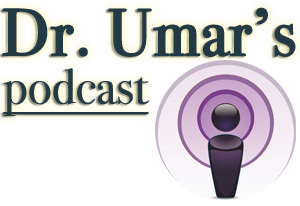Hair loss can certainly result from Acne Keloidalis Nuchae (AKN), a condition which manifests as varying sizes of bumps on the back of the head. To understand how this form of alopecia occurs, it is important to realize that with this condition, an amplified skin healing response (which is related to a genetic predisposition) is triggered by the presence of the individual’s own hair.
The hair follicles are no longer able to produce new hair shafts as they once did. Due to the extensive damage inflicted, the skin produces large amounts of thick collagen with the intent of repairing itself. These processes are the basic causes of AKN related hair loss, following the formation of bumps on the back of the head.
It is very important to have this awareness, especially with the widespread misconception that Acne Keloidalis Nuchae is the result of unclean barber clippers and can therefore be treated with DIY (e.g. rubbing alcohol and apple cider vinegar) approaches aimed at addressing bacteria
Is It Possible to Restore Hair In Acne Keloidalis Nuchae Sufferers ?
Understandably, the hair loss which occurs due to AKN can be disheartening for most patients. While it is actually not possible to regrow hair in the areas that have been affected, surgical or laser treatments can be employed to produce more discrete or natural looking outcomes. The exact approach used would determine the type of result which can then be achieved.
An Improved Appearance Through A Raised Posterior Hairline or Sparser Hair Density Following Laser Treatment
New improvements in laser treatment for Acne Keloidalis Nuchae result in better cosmetic outcomes for patients. Depending on the severity of the presentation, they may result in a raised posterior hairline or sparser hair density, coupled with a more natural-looking form of hair coverage.
To see how these improvements are attained and why they make a positive difference for patients, a good starting point is to first understand the rationale beyond the procedure.
In essence, the aim of a laser treatment would be to epilate (i.e. remove) hair so that it no longer perpetuates and sustains the progression of Acne Keloidalis Nuchae.
Dr.U has outlined specific treatment zones for epilation, based on the spread of the AKN lesions. As one example, if small lesion bumps are concentrated in the lower part of the nape area, the treatment zone would require that all hair is removed within this region, rather than just addressing the individual bumps on the back of the head which would leave a patchy appearance. This would cleanly raise the posterior hairline above an area where hair has been entirely removed. The end result is far more natural looking in appearance. And many patients would prefer this to having empty regions surrounded by hair.
If the bumps on the back of the head have spread much further up the scalp, Dr.U recommends giving individuals the option to retain some hair, versus completely epilating the entire back of the head. Patients would then be able to retain more styling choices (e.g. short buzz cut).

AKN laser treatment shown before and after procedure with a rather unnoticeable raised posterior hairline and a cohesive region of hair left in tact.
Posterior Hairline In Alignment with Linear Scar
For large-sized lesions, Dr.U has developed a specialized surgical removal technique where the lesion is excised according to a bat-shaped contour. When the wound-edges close together, this results in a linear scar which is then discretely aligned with the posterior hairline and inconspicuous to onlookers.

Large AKN lesion excised with resulting linear scar discretely aligned with posterior hairline
Thin Linear Scar Covered By Hair

Trichophytic closure results in a thin linear scar through which the patient’s own hair grows through
A small sized lesion in the upper part of the nuchal area can be excised. Dr. U has developed The appearance of the wound closure outcome can be improved upon using a method known as Trichophytic closure, an approach used in strip surgery. This is where the upper and lower wound edges are cut at specific angles to produce a more seamless looking end-result when they are closed-together. The lower wound margin would also contain decapitated hair follicles.
The purpose of this would be to grow hair through the upper wound margin and resulting linear scar, providing an additional form of camouflage.
With these surgical methodologies, Acne Keloidalis Nuchae patients are now have new alternatives which are capable of closely approximating the appearance of restored hair. This includes less noticeable scarring and an improved cosmetic appearance through a more normal looking posterior hairline.
Further Reading
Read more about punch size and its relation to pain experienced by the patient
Did David Beckham have a hair transplant? Find out more here








